#Josef Wirsching
Explore tagged Tumblr posts
Text

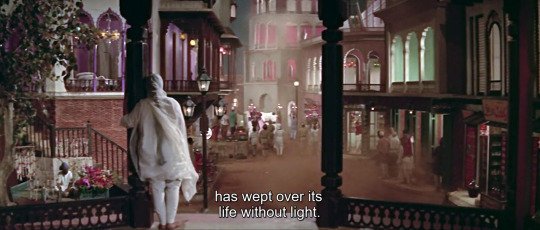

Pakeezah (1972) | dir. Kamal Amrohi
d.o.p. Josef Wirsching
#pakeezah#pakeezah 1972#kamal amrohi#veena#indian cinema#cinema#hindi cinema#movies#films#bollywood#old bollywood#classic cinema#bollywood movies#cinematography#world cinema#indian films#1970s#film quotes#movie quotes#movie scenes#film scenes#Josef Wirsching#indian movies#hindi films#hindi movies#bollywood films#classic bollywood#movie screencaps
21 notes
·
View notes
Text

Devika Rani on the sets of Izzat
17 notes
·
View notes
Photo
PAKEEZAH
Kamal Amrohi, (1971)
“The pure one” Hindi, Colour, 175 minutes. Screenplay and dialogue: Kamal Amrohi
Music: Ghulam Mohammed, Naushad
Lyrics: Kaif Bhopali, Majrooh Sultanpuri, Kaifi Azmi
Cinematography: Josef Wirsching
“Pakeezah | Indian Cinema - The University of Iowa.” n.d. Accessed October 13, 2023. https://indiancinema.sites.uiowa.edu/pakeezah.


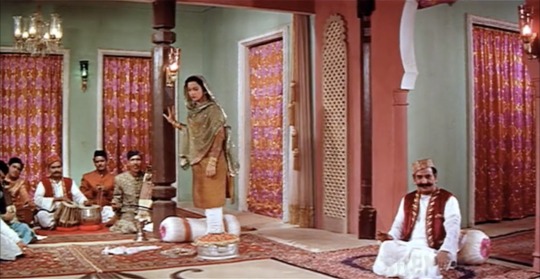
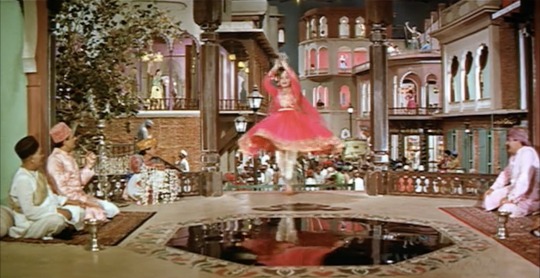




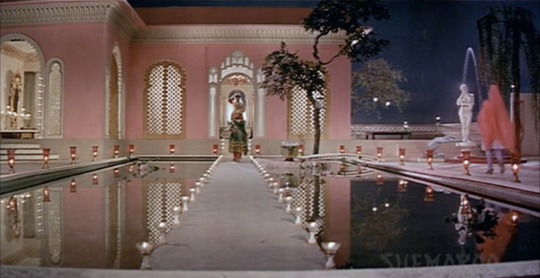

the sets of pakeezah (1972)
91 notes
·
View notes
Text
Episode 140 - The Night is Dark and Silent: Gyan Mukherjee’s Kismet and Sangram
It’s that time of year where we polish our guns and light up our cigarettes, it’s Noirvember time and we are up to no good with two Ashok Kumar classics.
Notes:
Apologies for the sound quality, we discovered after recording that we had set up our mic improperly
Noirvember and our Noirvember playlist
Park Chan-wook isn’t a fan of Noir
Film Noir
Thank you tommydan55
Gyan Mukherjee
Ashok Kumar
Kismet
First Indian Blockbuster
Lost and found formula
Franz Osten and Josef Wirsching
(INTERVAL (“Aaj Himalay Ki Choti Se” from Kismet)
Sangram
Cop father/criminal son formula
1930s gangster films
Next time: Manmohan Desai
Bollywood is For Lovers is a member of the Alberta Podcast Network
Check out Alberta Blue Cross!
Listen to The Well Endowed Podcast!
Find us on Apple Podcasts! and Stitcher! and audioBoom! and iHeartRadio! and Spotify! and Google Podcasts!
Thank you to Becca Dalke for the artwork!
Follow us on Twitter!
Like us on Facebook!
#Kismet#Gyan Mukherjee#Ashok Kumar#Mumtaz Shanti#Shah Nawaz#P.F. Pithawala#David#Sangram#Nalini Jaywant#Sajjan#Nawab#Shashi Kapoor#Noirvember#Film Noir#Hindi Cinema#Bollywood
1 note
·
View note
Photo

Exclusive visuals: Rare photographs from A Cinematic Imagination: Josef Wirsching and the Bombay Talkies
https://www.indulgexpress.com/galleries/culture-galleries/2019/jul/10/exclusive-visuals-rare-photographs-from-a-cinematic-imagination-josef-wirsching-and-the-bombay-tal-624.html
0 notes
Text
La historia de amor de un cineasta alemán con cine indio
Nueva Noticia publicada en https://noticiasq.com/la-historia-de-amor-de-un-cineasta-aleman-con-cine-indio/
La historia de amor de un cineasta alemán con cine indio

Incluso cuando la Segunda Guerra Mundial estalló, Josef Wirsching estaba ocupado en los decorados de Bombay (más tarde rebautizado como Mumbai), a menudo conocida como la ciudad de los sueños indios y el hogar de Bollywood. El alemán de Munich ha trabajado en más de 17 películas en hindi y urdu como director de fotografía en Bombay Talkies, un estudio creado por el legendario magnate del cine Himanshu Rai y la actriz estrella Devika Rani. Wirsching había trabajado con el director alemán Franz Osten en Emelka Film Studios en Munich para The Light of Asia, una película muda clásica sobre la vida de Buda en la década de 1920. Su primera visita a la India fue durante la producción de The Light of Asia. Después del rodaje, Wirsching y Osten regresaron a Alemania. Sin embargo, debido a la presión sobre los productores de películas de propaganda en la Alemania nazi, Wirsching prefirió aceptar la invitación de Rai para volver a trabajar en India, ofreciendo habilidades técnicas para Bombay Talkies, un estudio que definió las películas principales.
"Wirsching ha viajado entre India y Europa en un automóvil personalizado Mercedes Benz con su equipo fotográfico", dice Rahaab Allana, quien ayudó a encargarse de una exposición reciente. de fotografías raras del trabajo de Wirsching. Aunque Osten regresó a Alemania, Wirsching trabajó como director de fotografía para el estudio indio y luego como director de fotografía para otros estudios en Bombay. Fue el director de fotografía para películas hindúes populares como Jawani ki Hawa (1935), Achhut Kanya (1936), Mahal (1949), Dil Apna Preet Parai (1960) y el icónico Pakeezah (publicado más tarde). en 1972). Wirsching murió en India en 1967. "Su contribución se considera una parte importante del legado cinematográfico del cine sonoro en India", dice Allana. Más de 130 obras fotográficas de Wirsching fueron exhibidas por primera vez en una exhibición en Goa.
Las fotografías destacan la contribución pionera de Wirsching como director de fotografía y como documentalista que grabó los lugares, las actividades detrás de escena y los momentos francos de los actores en los escenarios de la película. Los archivos de Wirsching son una valiosa colección de originales reimpresiones originales y digitales de 1925 a 1967. "Este es un material de archivo invisible", dice Allana. Las fotografías se obtuvieron de la colección personal de unos 4.000 artefactos, entre los que se incluyen negativos fotográficos, grabados y documentos del sobrino de Wirsching, Georg, un artista visual de Goa. También hay fotografías tomadas por Wirsching en sus viajes por Asia y Europa, y él trabaja en sets. Wirsching comenzó a usar una pequeña cámara Leica portátil, una de las primeras en usar la película de 35 mm y que se puso a producir en 1925, y comenzó a tomar imágenes de la ya floreciente industria cinematográfica de Mumbai. Siglos de cámaras Leica
La contribución de Wirsching ha tenido un extraordinario impacto colaborativo en la realización de la película en la India y en la expresión cinematográfica del momento. "Wirsching ha llevado el internacionalismo europeo al cine indio y los aspectos del modernismo han echado raíces incluso en los temas profanos de películas como Achhut Kanya que cuestionaron la intocabilidad", dice Allana.
A Wirsching también se le atribuyen aspectos del expresionismo alemán que incluyen la iluminación de los sueños, composiciones atmosféricas, ángulos de cámara poco convencionales e imágenes fantásticas para películas habladas de la India. Su cámara aportó brillo a la pantalla y transformó héroes y heroínas de la época como Devika Rani, Leela Chitnis, Ashok Kumar y Dilip Kumar, entre otros, en etéreas creaciones de celuloide. En su quincuagésimo aniversario de su muerte, las fotografías de Wirsching recuerdan a un hombre que, en el exilio, resultó ser un pionero en el cine y en la creación de imágenes en un país extranjero. Fotografías cortesía de la exhibición, A Cinematic Imagination: Josef Wirsching y los Bombay Talkies. El espectáculo fue una colaboración entre Serendipity Arts y la Fundación Alkazi. El espectáculo fue curado por Debashree Mukherjee y Rahaab Allana y Georg Wirsching.
Puedes leer el articulo completo (en ingles) Aquí
0 notes
Link

There have been so many moments on the silver screen when all we could do was get emotional. But Filmfare has had to overlook many gems in an effort to put forth a definite 100 films that have stood the test of time. And we assume shall continue to do so. This isn’t the list. Believe us, if we had a free hand we’d have compiled a 1000 movie list. Instead, we prefer a hot list that stands for what is the best of our cinema. Yes no amount of commiserations can console the runners up who didn’t make the cut. But every single movie featured in the following list deserves its place at the top of the marquee.
Raja Harishchandra Year: 1913 Director: Dadasaheb Phalke Producer: Dadasaheb Phalke Cast: Dattaraya Damodar Dabke, Salunke, Bhalachandra D Phalke, P G Sane

The ad for the first Indian film read like this: Raja Harishchandra. A performance with 57,000 photographs. A picture two miles long. All for only three annas. Dadasaheb Phalke was influenced by Raja Ravi Varma’s paintings and based his film on the travails of king Harishchandra, who gave up his kingdom, his wife and children to keep his promise to sage Vishwamitra. Dadasaheb couldn’t find women to act the female parts and eventually had to settle for young boys for such roles. The film was processed in London. It’s said Phalke’s wife manually perforated the reels in the night. Live music was used as an accompaniment. The film was an instantaneous success. It opened to packed houses everywhere. Sadly, only an incomplete copy of the film exists today. Harishchandrachi Factory, a tribute to Phalke made by Paresh Mokashi, is a must-see for all cinema history buffs as it gives a fair idea about the challenges faced by the man who pioneered Indian cinema.
DID YOU KNOW?
1. Phalke’s wife cooked food all alone for the cast and crew of more than 500 people. 2. Filmmaking as a profession was virtually unknown back then. Hence, Phalke advised his cast and crew to tell others that they were working in the factory of one ‘Harishchandra’.
Alam Ara Year: 1931 Director: Ardeshir Irani Producer: Imperial movie tone Cast: Master Vithal, Zubeida, Jillo, J Sushila, Prithviraj Kapoor Music: Ferozshah M Mistri, B Irani

Alam Ara, as we know it was our first talkie. When it was first released on March 14, 1931 at Majestic cinema in Mumbai, police had to be brought in to control the crowds. This Ardeshir Irani film had many firsts to its name. The first song of Indian cinema, Dil de khuda ke naam par, was sung by Wazir Mohammed Khan. It was recorded live (Khan played a fakir in the film) as there was no playback then. The period film was mostly shot at night to avoid modern daytime ambient sounds. Hence, Alam Ara also started the tradition of shooting under studio lights. Hidden microphones were used to record the voices of the actors. Incidentally, two actors connected with the film, Prithviraj Kapoor and LV Prasad, went on to become giants in their own right. Both were awarded the Dadasaheb Phalke Award (Kapoor posthumously in 1972 and Prasad in 1982) for their immense contribution to Indian cinema.
DID YOU KNOW? 1.The last known print of this film was destroyed in a fire at the National Archives of India, Pune, in 2003.
2. Director Mehboob Khan was briefly considered for the male lead’s role, which finally went to Master Vithal.
Devdas Year: 1936 Director: Pramathesh Chandra Barua Starring: K L Saigal, Jamuna Barua, TR Rajakumari Music: R C Boral, Pankaj Mullick

If the West has the classic Romeo And Juliet, we have Devdas. The immortal love story written by Sarat Chandra Chatterjee has seen numerous cinematic interpretations down the years. The pioneering one was this Bengali/ Hindi bilingual directed by PC Barua. The Hindi version had KL Saigal playing the doomed lover while Barua himself essayed the role in the Bengali version. The story was a critique on the prevalent cast system. Devdas couldn’t marry his childhood sweetheart Paro as she belonged to a lower caste. The dejected lover finds solace in the arms of a nautch girl, Chandramukhi who gets reformed through love. Paro is married off to a wealthy widower and a distraught Devdas, his health deteriorated by excessive alcohol, finally dies at her doorstep. The film helped Saigal carve his superstardom and its influences impacted all the subsequent interpretations.
Achhut Kanya Year: 1936 Director: Franz Osten Producer: Himanshu Rai Cast: Ashok Kumar, Devika Rani Music: Saraswati Devi

If Devdas talked about disparity between the classes then Achhut Kanya went a step further and tackled untouchability, which was a curse during those days and is still rampant in our social fabric. Interestingly, Ashok Kumar was cast in the film because the original actor Nazam-ul-Hassan tried to elope with the producer’s wife Devika Rani. Ashok Kumar played a Brahmin’s son in love with an untouchable girl played by Devika Rani. Director Franz Osten didn’t shrink away from depicting the truth of the situation and the film is remembered for its intense mob scenes. It’s also known for its musical score. The song, Main ban ke chidiya sung by the lead stars is popular even today. Incidentally, the music was given by Saraswati Devi, one of our pioneering women composers.
DID YOU KNOW?
Ashok Kumar worked as a laboratory assistant in Bombay Talkies when he was asked to play the lead in the film.
Kismet Year: 1943 Director: Gyan Mukherjee Producer: Bombay Talkies Cast: Ashok Kumar, Mumtaz Shanti, Shah Nawaz Music: Anil Biswas

This can be termed as Bombay Talkies’ most successful film and earned for its protagonist Ashok Kumar the tag of the superstar. The dye for the suave, urban hero was cast and Ashok Kumar’s urban chic serves as a model to date. The film pioneered the lost-and-found formula and the ‘double role’ formula as well. Also, the public accepted that lead characters could be grey-shaded as well. The film is also known for its nationalistic song, Door hato ae duniyawalon Hindustan hamara hai. The British thought lyricist Pradeep was writing anti-German and anti-Japanese slogans in the middle of World War but the Indians got its true meaning. By the time the British realised it, it was too late. Another song, a duet between Ashok Kumar and Amirbai Karnataki, Dheere dheere, is also remembered till date.
DID YOU KNOW?
1. Kismet ran for three years at a theatre in Kolkata. 2. The movie also has the distinction of being the first ‘double-role’ played by any Indian actor.
Neecha Nagar Year: 1946 Director: Chetan Anand Producer: Rashid Anwar Cast: Kamini Kaushal, Uma Anand Music: Ravi Shankar

The film’s top notch quality shared the Grand Prix du Festival International du Film award at the first ever Cannes Film Festival held in 1946. The film was director Chetan Anand’s magnum opus and brought to light the disparities of the millions of Indians who have next to nothing while a few rich enjoy all the benefits. In an era which thrived on escapist musicals, the maverick director brought out his Marxist leanings into play to make a grim realistic film, which stands tall with the best of Satyajit Ray or Ritwik Ghatak products. It can be called the granddaddy of the parallel film movement that was to follow later. The film is still relevant in the sense that nothing has changed, there are parallel Indias which co-exist – the India of glass towers and the India where people don’t have access to clean water are juxtaposed. Kamini Kaushal and sitar maestro Ravi Shankar were the other two besides Chetan to begin their careers with this film.
DID YOU KNOW?
1. The opening credit shows the certificate of the award won by the movie at the Cannes Film Festival.
2. The film starred Uma Anand, Chetan Anand’s wife in a prominent role.
Mahal
Year: 1949 Director: Kamal Amrohi Producer: Ashok Kumar and Savak Vacha Cast: Ashok Kumar, Madhubala Kanu Roy, Vijayalaxmi Music: Khemchand Prakash

Kamal Amrohi’s classic is home to many firsts – it started off the trend for reincarnation thrillers, it turned the 16-year-old Madhubala into a superstar and made Lata Mangeshkar a household name. It’s said that the name of the singers on record jackets started appearing only after the immense popularity of Lata’s Aayega aanewala. Music director Khemchand Prakash brought out the echo effect in the song by making the singer walk from one corner of the recording room to the mike kept in the middle. Cinematography by German cinematographer Josef Wirsching, reminiscent of German expressionist cinema added to the film’s appeal. The film was the biggest earner at the Indian box office that year, its revenue eclipsed that of Andaz and Barsaat released the same year. The film proved to be another feather in Ashok Kumar’s cap, who was also one of the producers of the film.
DID YOU KNOW?
Mahal was the first Hindi thriler to have a song which worked as a leitmotif throughout the film. This became a trend and was followed in other such films like Madhumati, Woh Kaun Thi and Mera Saaya.
Andaz Year: 1949 Director: Mehboob Khan Producer: Mehboob Khan Cast: Dilip Kumar, Raj Kapoor, Nargis Music: Naushad

This Mehboob Khan venture was the only film in which Dilip Kumar and Raj Kapoor starred together. Andaz was a sizzling love triangle with Nargis and offered a preachy take on the flirtatious nature of modern women. The film played up the strength of its heroes. Dilip was the shy, introverted lover who takes to tragic undertones after rejection while Raj was the happy-go-lucky man who charms the heroine and later lectures her on how she shouldn’t be engaging as it lead to misunderstandings. We might find the melodrama involving missing letters and miraculous revelations a bit clichéd today but the audience went berserk seeing their favourite stars in tandem and the film’s popularity gave rise to multistarrer romances. It could be a precursor to the Yash Chopra formula of having stylised, upper class characters falling in love in exotic locales. Another highlight of the film was music director Naushad effecting a reverse by making Mukesh sing for Dilip Kumar and Mohammed Rafi for Raj Kapoor.
DID YOU KNOW?
1. Cameraman Faredoon Irani was unhappy with Dilip Kumar’s casting and allegedly asked, “Who’s this monkey?” when Khan first walked in on the set
2. At the time of its run at the theatre, Andaz was considered an ill omen for the director and his stars, with Mehboob losing his mother and brother, Nargis losing her mother and Dilip Kumar being assaulted by goons at Worli.
Awara Year: 1951 Director: Raj Kapoor Producer: Raj Kapoor Cast: Prithviraj Kapoor, Raj Kapoor, Nargis, Leela Chitnis, KN Singh Music: Shankar Jaikishan

The Russians loved it, the Turks loved it, the Egyptians loved it and so did the Europeans. Such was the film’s craze that it was remade in Turkey as Avaray. The song Awara hoon is still popular in the former Soviet bloc countries. Awara is touted as a premier Indian product, which found a global audience. Its lead pair Raj Kapoor and Nargis achieved cult status abroad. The film, written by leftist writer Khwaja Ahmad Abbas, dealt with the issue of nature versus nurture. It railed against the false notion of lineage – that the son of a criminal would have crime running in his veins and vice versa. One can also interpret it as a critique about the class disparity in India. The film cut a chord with the Nehruvian socialism that was sweeping across the country at the time. Another reason for its evergreen popularity is the sizzling chemistry between Raj and Nargis, which owed much to their off-screen romance.
DID YOU KNOW?
1. The character Raj is given prisoner number 308, which is the same as article number of Indian Penal Code for which he is charged and tried i.e.’Attempt to commit culpable homicide’ in the film.
1 note
·
View note
Text



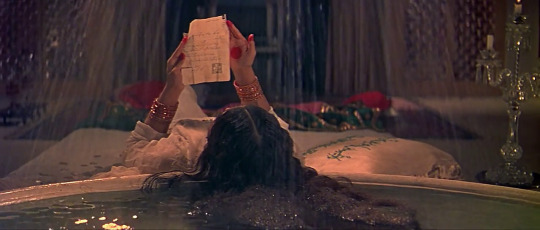
Letters in Pakeezah (1972)
[ dir. Kamal Amrohi | d.o.p. Josef Wirsching ]
#pakeezah#pakeezah 1972#kamal amrohi#meena kumari#ashok kumar#joe wirsching#bollywood#indian cinema#hindi cinema#cinema#movies#films#world cinema#classic cinema#1970s#cinematography#letters#aesthetics#urdu#calligraphy#bollywood movies#bollywood films#old bollywood#classic bollywood#indian films#indian movies#hindi films#hindi movies#film screencaps#movie screencaps
52 notes
·
View notes
Link
Josef Wirsching refused to produce propaganda films in Nazi Germany, instead working in Mumbai. from BBC News - World http://www.bbc.co.uk/news/world-asia-india-42422599
0 notes
Link
Josef Wirsching refused to produce propaganda films in Nazi Germany, instead working in Mumbai. from BBC News - World http://ift.tt/2BU5fgl
0 notes
Link
Josef Wirsching refused to produce propaganda films in Nazi Germany, instead working in Mumbai. from BBC News - World http://ift.tt/2BU5fgl
0 notes
Link
Josef Wirsching refused to produce propaganda films in Nazi Germany, instead working in Mumbai. from RSSMix.com Mix ID 8265879 http://www.bbc.co.uk/news/world-asia-india-42422599
0 notes
Link
Josef Wirsching refused to produce propaganda films in Nazi Germany, instead working in Mumbai. from BBC News - World http://ift.tt/2BU5fgl
0 notes
Link
Image copyright Josef Wirsching Archive Image caption Munich-born Josef Wirsching worked on over 17 Hindi and Urdu films Even as World War Two broke, Josef Wirsching was busy on the movie sets in Bombay (later renamed Mumbai), often called the Indian city...
0 notes
Link
Josef Wirsching refused to produce propaganda films in Nazi Germany, instead working in Mumbai. from BBC News - World http://ift.tt/2BU5fgl
0 notes
Link
Josef Wirsching refused to produce propaganda films in Nazi Germany, instead working in Mumbai. from BBC News - World http://ift.tt/2BU5fgl
0 notes